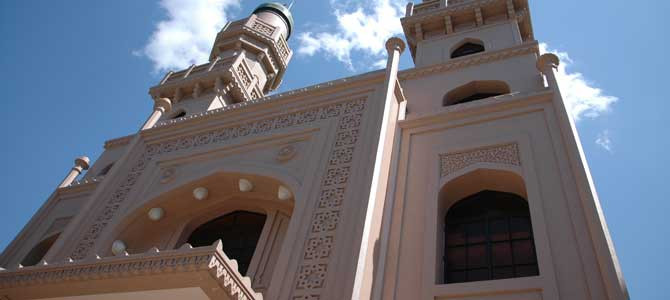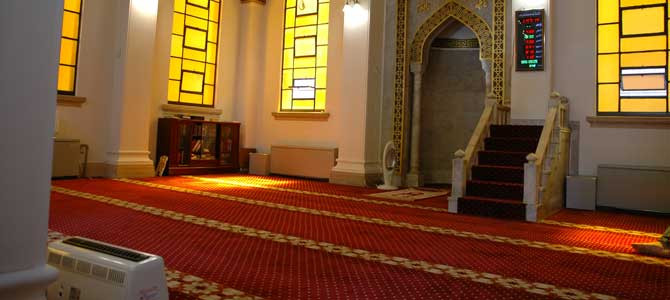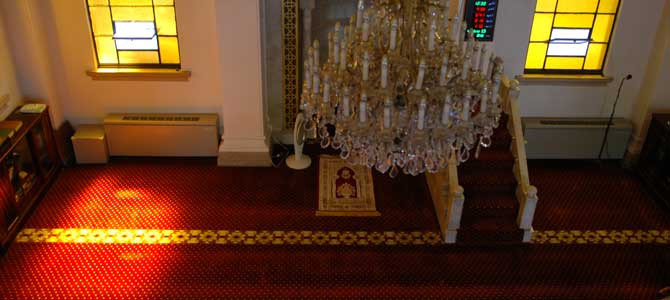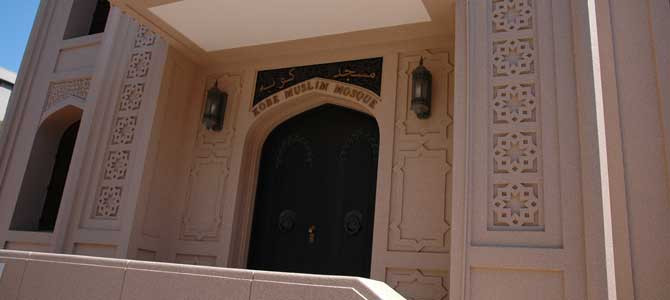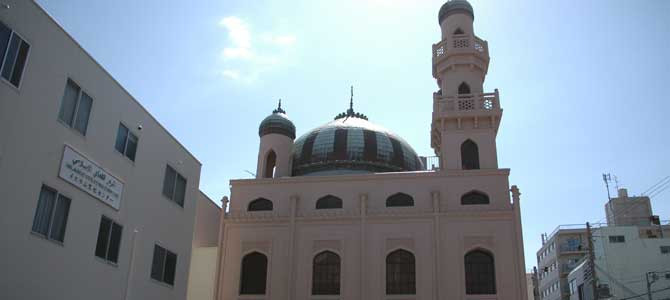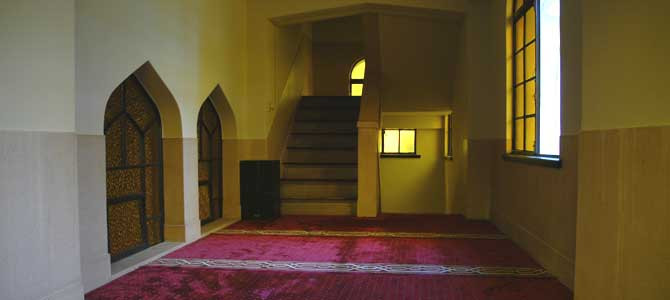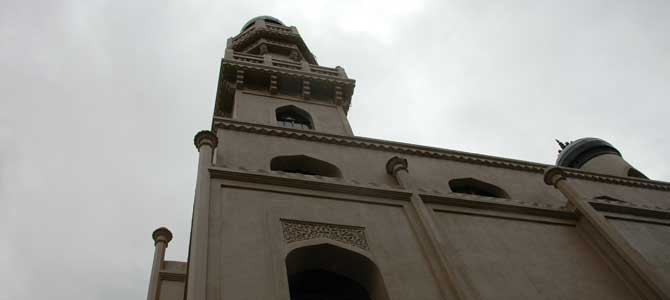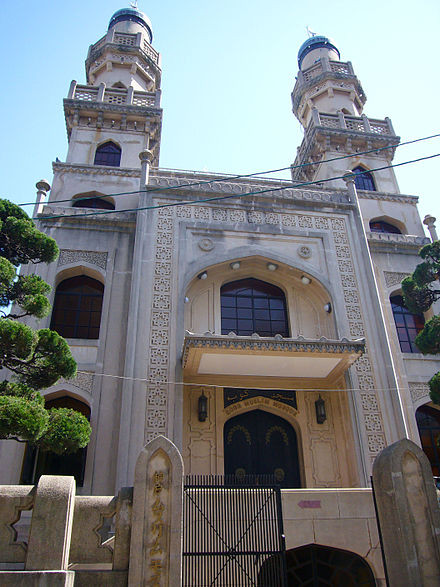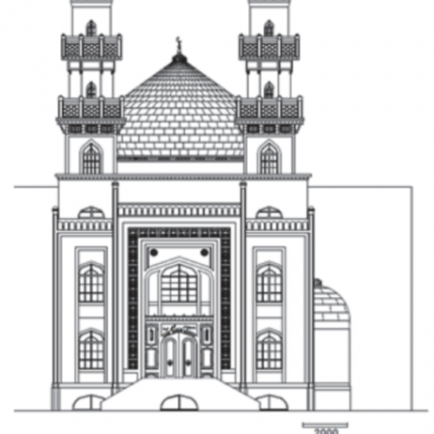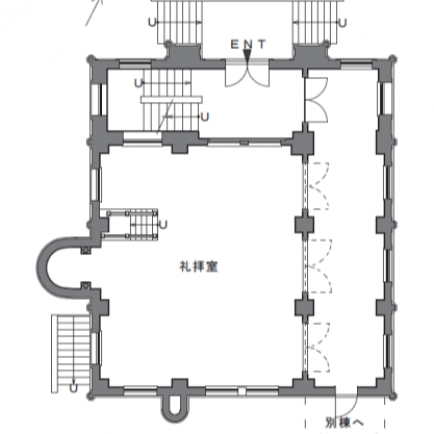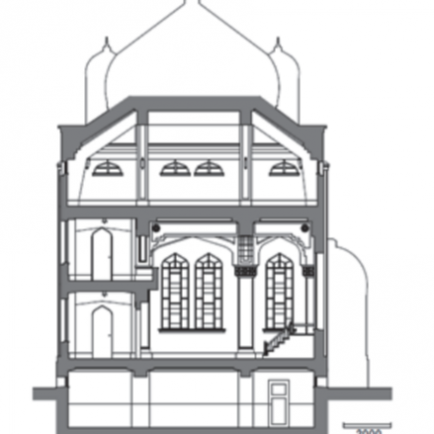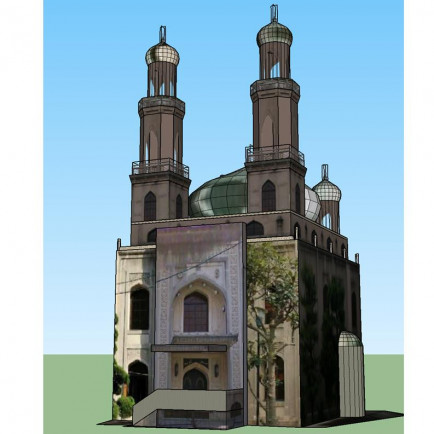Kobe Mosque
History
The mosque experienced “miracle” of survivals from uncountable tragedies to them - Kobe Flood in 1938, Kobe Air raid during WW2, subsequent postwar social disorder, tourism development as “Izinkan gai”, and Great Earthquake in 1995. In this paper, author analyze background of major disasters - 1945 Air Raid and 1995 Earthquake - and pointed out possible reason generated the “miracle”; the surroundings of the mosque had slightly wider buffer space with adjoining properties, consisted stronger ground and stable soil condition, structure has enough strength to resist, and sophisticated management and continuous maintenance by mosque committee members.
WW2 Air raid 1944: Kobe air-raid during the WW2, the fires and destruction reached to the mosque area, Kobe air raid in March, 1945, 21% built up area is burned and destructed. According to the picture taken in 1946, a few structures were remained, mainly reinforced concrete structure. Other remains are chimney of burned residential buildings. The picture (Fig.3) indicates completely burned Kobe city area, until the line of elevated railway lines and Sannomiya Station. Immediate after the war, aerial picture taken by US Army indicated completely destroyed nature of city, and fires are reached to another two blocks up to the hill side. However, shadow of two minarets and dome of the mosque surrounded burned field, and only windows were broken.
Kobe Earthquake 1995: January 17 earthquake destroy wide area of the Kobe City. The mosque had slightly damaged, despite of the surrounding buildings were seriously destroyed and ruined. According to the map which recorded and analyze the damage happened individual building, mosque has been recorded “no damage”. Surrounding areas were experienced more serious damage, especially area has survived WW2 Air raid 1944. It could be understood that mosque stands above stable land, and stronger structural design by architects Jan Josef Švagr who trained as engineer and witnessed aftermath of Great Kanto Eathquake in Yokohama. Immediate after the earthquake, the mosque functioned as a shelter for Muslims staying in Kobe, and accommodate them as long as a month until basic needs were recovered. These evacuee required specific diet – halal foods, fresh waters, and daily necessities for infants. Remarkably, Muslim community both from international and locals send these necessities to the mosque immediate after the disaster, and evacuees were helped each other beyond their origins and nationalities.
Urban and Architectural
Kobe Mosque is the first mosque developed in Japan. The solid structure of the building permitted it to stay standing amid the bombings of World War II and to be utilized by the Japanese military as a shield amid the . The mosque survived the Incredible Kobe Seismic tremor in 1995 and housed numerous families that misplaced their homes. The mosque is built in traditional Asian-Turkish style and is elaborately decorated.
Location: 2 Nakayamate Douri, Chuo-Ku, Kobe City, Hyogo Prefecture.
Construction: 1935 (Official occupational certificate issued)
Structure: Reinforced Concrete
Floor level: 3 levels + 1 Underground level
Roofing: Flat Roof with partially Dome (Wooden Structure and Copper Roofing)
Walls: “Exposed-aggregate finish by washing”
Total Floor Size: 250 sqm
Architectural Design: Jan Josef Švagr
Construction works: Takenaka Corporation
Description
The mosque was built in 1935. It has survived air raids during the War in the Pacific as well as the 1995 Great Hanshin Earthquake, and the original building is intact even today. Located in Kitano-Cho foreign district, Kobe Mosque is at the heart of one of the most popular tourist areas of the city. It’s just a 10-minute walk from Kobe-Sannomiya Station.
References
https://www.mukogawa-u.ac.jp/~iasu2016/pdf/iaSU2016_proceedings_301.pdf
https://www.islamicarchitecturalheritage.com/listings/kobe-mosque
Details
Location
2-25-14 Nakayamate Dori, Chuo-ku, Kobe-shi, Postal Code: 650-0004
Worshippers
125
Owners
Islamic Committee of Kobe
Architect Name
Year of Build
1935
Area
250 sqm
Drawings
Map
History
The mosque experienced “miracle” of survivals from uncountable tragedies to them - Kobe Flood in 1938, Kobe Air raid during WW2, subsequent postwar social disorder, tourism development as “Izinkan gai”, and Great Earthquake in 1995. In this paper, author analyze background of major disasters - 1945 Air Raid and 1995 Earthquake - and pointed out possible reason generated the “miracle”; the surroundings of the mosque had slightly wider buffer space with adjoining properties, consisted stronger ground and stable soil condition, structure has enough strength to resist, and sophisticated management and continuous maintenance by mosque committee members.
WW2 Air raid 1944: Kobe air-raid during the WW2, the fires and destruction reached to the mosque area, Kobe air raid in March, 1945, 21% built up area is burned and destructed. According to the picture taken in 1946, a few structures were remained, mainly reinforced concrete structure. Other remains are chimney of burned residential buildings. The picture (Fig.3) indicates completely burned Kobe city area, until the line of elevated railway lines and Sannomiya Station. Immediate after the war, aerial picture taken by US Army indicated completely destroyed nature of city, and fires are reached to another two blocks up to the hill side. However, shadow of two minarets and dome of the mosque surrounded burned field, and only windows were broken.
Kobe Earthquake 1995: January 17 earthquake destroy wide area of the Kobe City. The mosque had slightly damaged, despite of the surrounding buildings were seriously destroyed and ruined. According to the map which recorded and analyze the damage happened individual building, mosque has been recorded “no damage”. Surrounding areas were experienced more serious damage, especially area has survived WW2 Air raid 1944. It could be understood that mosque stands above stable land, and stronger structural design by architects Jan Josef Švagr who trained as engineer and witnessed aftermath of Great Kanto Eathquake in Yokohama. Immediate after the earthquake, the mosque functioned as a shelter for Muslims staying in Kobe, and accommodate them as long as a month until basic needs were recovered. These evacuee required specific diet – halal foods, fresh waters, and daily necessities for infants. Remarkably, Muslim community both from international and locals send these necessities to the mosque immediate after the disaster, and evacuees were helped each other beyond their origins and nationalities.
Urban and Architectural
Kobe Mosque is the first mosque developed in Japan. The solid structure of the building permitted it to stay standing amid the bombings of World War II and to be utilized by the Japanese military as a shield amid the . The mosque survived the Incredible Kobe Seismic tremor in 1995 and housed numerous families that misplaced their homes. The mosque is built in traditional Asian-Turkish style and is elaborately decorated.
Location: 2 Nakayamate Douri, Chuo-Ku, Kobe City, Hyogo Prefecture.
Construction: 1935 (Official occupational certificate issued)
Structure: Reinforced Concrete
Floor level: 3 levels + 1 Underground level
Roofing: Flat Roof with partially Dome (Wooden Structure and Copper Roofing)
Walls: “Exposed-aggregate finish by washing”
Total Floor Size: 250 sqm
Architectural Design: Jan Josef Švagr
Construction works: Takenaka Corporation
Description
The mosque was built in 1935. It has survived air raids during the War in the Pacific as well as the 1995 Great Hanshin Earthquake, and the original building is intact even today. Located in Kitano-Cho foreign district, Kobe Mosque is at the heart of one of the most popular tourist areas of the city. It’s just a 10-minute walk from Kobe-Sannomiya Station.


